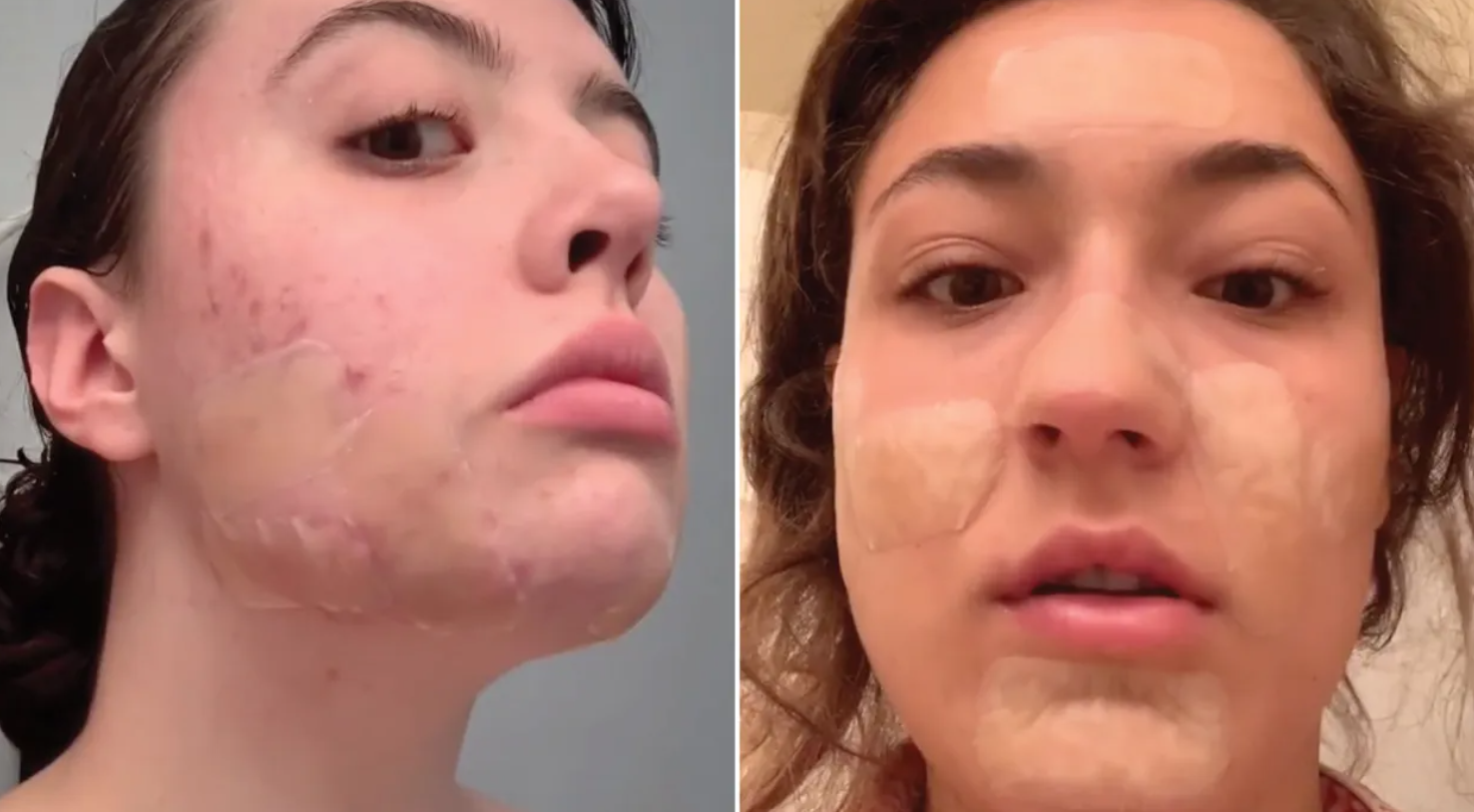Unveiling the Wonders of Hydrocolloid Bandages: A Comprehensive Guide

Hydrocolloid Bandages – In wound care and first aid, hydrocolloid bandages have emerged as an innovative solution that protects wounds and accelerates the healing process. These unassuming adhesive dressings have gained significant attention due to their unique composition and remarkable benefits.
This comprehensive guide delves into the world of hydrocolloid bandages, exploring their composition, mechanisms of action, applications, benefits, and tips for optimal usage.
The Science Behind Hydrocolloid Bandages
Hydrocolloid bandages are specialized wound dressings primarily composed of hydrocolloid materials, which are biocompatible polymers capable of absorbing and retaining moisture.
The hydrocolloid dressing usually consists of a flexible and waterproof outer layer, an adhesive layer for secure attachment, and an inner layer of hydrocolloid materials such as gelatin, pectin, or carboxymethylcellulose.
The inner layer is responsible for the impressive properties that make hydrocolloid bandages stand out.
Mechanisms of Action:
- Moist Wound Healing: One of the key advantages of hydrocolloid bandages is their ability to maintain a moist wound environment. This is crucial for faster wound healing, as it promotes cell migration, proliferation, and granulation tissue formation.
- Absorption of Exudate: Hydrocolloid bandages have exceptional fluid-absorbing capabilities. The hydrocolloid particles absorb wound exudate (fluid that oozes from wounds), turning it into a gel-like substance that remains trapped within the dressing. This reduces the risk of maceration (softening of skin due to excessive moisture) and prevents bacterial contamination.
- Barrier Protection: The waterproof outer layer of hydrocolloid bandages acts as a barrier, shielding the wound from external contaminants such as dirt, bacteria, and moisture.
Applications and Benefits:
- Pressure Ulcers and Bed Sores: Hydrocolloid bandages effectively manage pressure ulcers and bed sores. Their ability to conform to body contours, provide cushioning, and promote moist wound healing makes them ideal for these cases.
- Minor Abrasions and Cuts: For minor cuts and abrasions, hydrocolloid bandages offer protection against infection while fostering an optimal environment for the skin to regenerate.
- Blister Management: These bandages are a game-changer in blister care. They shield the blister from friction and bacteria and accelerate the healing process.
- Acne and Pimple Care: Hydrocolloid bandages designed for acne treatment can absorb excess oil and pus from pimples, leading to quicker resolution and reduced scarring.
- Post-Surgical Wounds: Their gentle adherence and moisture-retaining properties make hydrocolloid bandages valuable for post-surgical wound care, promoting faster recovery.
Optimal Usage Tips:
- Cleanse the Wound: Ensure the wound is clean and dry before applying the bandage. This prevents infection and enhances adhesion.
- Size Selection: Choose a bandage that covers the wound while leaving a slight margin for optimal adhesion.
- Avoid Overlapping: Avoid overlapping the edges of the bandage, as this could cause irritation and compromise adhesion.
- Regular Inspection: While hydrocolloid bandages are known for their durability, inspecting the wound and changing the dressing if it becomes saturated or starts to lift at the edges is wise.
- Consult a Healthcare Professional: For deeper wounds, infections, or chronic conditions, consulting a medical professional is essential.
How to apply hydrocolloid bandages?
Tips for Successful Application:
- Cleanliness: Ensure the wound is clean and dry before applying the bandage to prevent infection and promote adhesion.
- Appropriate Size: Choose a bandage that adequately covers the wound while leaving a slight margin for adhesion on healthy skin.
- Avoid Touching Adhesive: Handle the bandage by the edges to prevent contamination of the adhesive surface.
- No Stretching: Avoid stretching the bandage excessively, as it may compromise its adhesion and effectiveness.
- Avoid Overlapping Edges: Ensure the edges of the bandage do not overlap to prevent friction and irritation.
- Change When Necessary: If the bandage becomes saturated, loses its adhesion, or shows signs of irritation, change it promptly.
- Consult a Professional: Seek medical advice for deep, infected wounds, or requiring special care.
How long do you leave on hydrocolloid bandages?
Here are a few key points to consider regarding wear time:
- Manufacturer’s Recommendations: Always follow the instructions provided by the manufacturer of the hydrocolloid bandage. They will specify the recommended wear time for that particular product.
- Wound Type: The type and severity of the wound can influence the wear time. Larger wounds or wounds with heavier exudate (fluid discharge) may require more frequent dressing changes.
- Wound Condition: Regularly monitor the condition of the wound and the bandage. If the bandage becomes saturated, starts to lift at the edges, or shows signs of contamination, it should be changed regardless of the recommended wear time.
- Individual Variation: People’s skin and wound conditions can vary. Some individuals might find that the bandage stays adhered and is effective for the full recommended wear time, while others might need to change it sooner due to individual factors.
- Consult a Healthcare Professional: If you’re uncertain about the appropriate wear time for a specific wound or if you encounter any issues while using hydrocolloid bandages, it’s a good idea to consult a healthcare professional for guidance.
Remember that the primary goal of using hydrocolloid bandages is to create a moist wound-healing environment, manage exudate, and protect the wound from contaminants. Regularly checking the application and the injury itself is essential to ensure that the healing process is progressing well and that the bandage is still effectively adhered.
When to use hydrocolloid bandages?
Certainly! Here are the situations when you might consider using hydrocolloid bandages:
- Minor Cuts and Scrapes:
- Use hydrocolloid bandages for small wounds that heal well but need protection from dirt and bacteria.
- Blisters:
- Apply hydrocolloid bandages to blisters to protect them from friction, promote healing, and prevent infection.
- Pressure Ulcers and Bed Sores:
- Hydrocolloid bandages are suitable for managing pressure ulcers and bed sores as they provide cushioning and promote moist wound healing.
- Acne and Pimples:
- Use hydrocolloid bandages designed for acne care to absorb pus, reduce inflammation, and aid in quicker healing.
- Post-Surgical Wounds:
- Apply hydrocolloid bandages to post-surgical wounds to protect them, manage exudate, and support healing.
- Superficial Burns:
- Hydrocolloid bandages can be used on minor burns to protect the wound and create an optimal environment for healing.
- Calluses and Corns:
- Apply hydrocolloid bandages to calluses and corns to reduce pressure, promote healing, and alleviate discomfort.
- Wounds with Light to Moderate Exudate:
- Hydrocolloid bandages are effective for wounds that produce moderate exudate (fluid) as they help manage moisture and promote healing.
- Areas Prone to Friction:
- Use hydrocolloid bandages in areas prone to friction, like heels or toes, to prevent rubbing and blisters.
- Dry Wounds that Need Moisture:
- Hydrocolloid bandages can be used on dry wounds to create a moist environment that accelerates healing.
- Wounds Healing by Secondary Intention:
- Apply hydrocolloid bandages to wounds healing by secondary intention (from the bottom up) to support tissue regeneration.
Conclusion:
Hydrocolloid bandages have revolutionized wound care with their moisture-retaining properties, efficient exudate management, and protective barrier functions. From minor cuts to complex pressure ulcers, these adhesive dressings offer a range of benefits that accelerate the healing process and reduce the risk of infection.
By understanding their mechanisms of action and following best practices for application, users can harness the full potential of hydrocolloid bandages in promoting optimal wound healing. Always remember that while these bandages are incredibly effective, professional medical advice should be sought for serious or persistent wounds.
FAQs
Q1: What are hydrocolloid bandages made of?
- A1: Hydrocolloid bandages are composed of biocompatible polymers like gelatin, pectin, or carboxymethylcellulose, which form a gel when they interact with wound exudate.
Q2: How do hydrocolloid bandages work?
- A2: Hydrocolloid bandages create a moist wound environment, absorb exudate, promote cell healing, and act as a protective barrier against contaminants.
Q3: Can I shower with a hydrocolloid bandage on?
- A3: Many hydrocolloid bandages are waterproof, allowing you to shower while wearing them. However, prolonged exposure to water might affect adhesion. Follow the manufacturer’s instructions.
Q4: How often should I change the hydrocolloid bandage?
- A4: The recommended wear time varies, but it’s generally 2 to 7 days. Change the bandage if it becomes saturated, lifts at the edges, or shows signs of irritation.
